In recent weeks we’ve been talking a lot about reflections on bespoke over time; the lessons I draw from commissioning tailoring for 13 years or so.
We did an article on how dramatically tailoring can be altered, using my Chittleborough & Morgan suit as an example. I’m planning one (following reader requests) on the pieces that, despite alterations, I’ve grown out of. And there was also our recent article on how my winter wardrobe has changed.
These articles are satisfying to write, as I feel they offer more informed and objective advice. Bespoke has to be a long-term investment if it’s going to be worth it, and these pieces assess that from personal experience.
Today’s article is in that same vein.
I commissioned the suit below from Whitcomb & Shaftesbury in 2015. Six years later, I commissioned a jacket, but with changes to the style to reflect my changing preferences.
So what were those changes, what do they say about fashions, and how much do they undermine the argument for bespoke that is meant to last a lifetime?
Bigger
The most significant change was for the jacket to both look and feel bigger.
Now some of this was because I had put on weight (both muscle and fat, mind you) in the intervening years. According to the measurements, about 1.5 inches on the chest and 1 inch on the waist.
But this didn’t actually affect too many of the style choices. These were mostly about shoulder width, waist button and lapel shape, and weight changes mostly affect the size in the chest and waist - even the shoulder width is relatively unaffected.
The desire for size was more about wanting a jacket that looked shaped - elegant and flattering - but also very comfortable. I think a lot of us have felt this desire for comfort in the past 18 months, and the fashion has decidedly tipped towards larger silhouettes at the same time.
It was this I had in mind when I asked for the shoulders of my new jacket to be wider (⅜ of an inch in the end) and for the larger chest and waist to tend towards roomy.
Wider
The fashion aspect of wanting a larger-looking jacket also drove other changes.
We know from analysing the cuts of suits that the front of a jacket can be thought of as an ‘X’ shape, with the top half being the line of the lapels, the bottom the open fronts, and the crossover the buttoning point.
If you want to look larger in the upper body, you increase the top of that X by widening the lapels (and the shoulders) and lowering the buttoning point. With my Whitcomb jacket, the lapels were widened from 3 inches to 3¾, and the buttoning point was lowered by half an inch.
Requesting wider lapels was also a pure style point, unrelated to how it makes the body look. It’s something I’ve favoured for a while on any style of jacket, and the original Whitcomb lapels were unusually narrow in that respect.
Longer
Only a little longer. A half inch at most.
The problem with any changes to proportion is that you have to keep the jacket in balance. I’ve seen newcomers dramatically alter proportions on a bespoke commission, only for the buttoning point to look like it’s over the groin, and the skirt little more than a frill.
So always err on the side of caution. Look at the jacket as a whole, and consider that it must remain balanced. We’re not actually aiming for a piece of fashion here - the test of that being, perhaps, whether anyone unversed in bespoke notices the choices you’ve made. They shouldn’t; they should just think it looks good.
So with this Whitcomb jacket, it wasn’t that I wanted it longer necessarily. Just that it looked much more harmonious when it was.
A good way to test that is considering where you’d place a second button, below the waist button. If it would look comically low, then you’ve done something wrong.
Even with my jacket here, I decided to leave off a second button because it would have strayed too far down the curved openings below. But that was more about that curved shape than about the length.
Rounder
Which brings us onto the last point, which is that I wanted the jacket to be more casual - which often means rounder.
Those open fronts below the waist button were a little more curved. The lapel was cut straighter, so it curves slightly outwards as it runs up the jacket, rather than inwards (as the previous suit had done). And the shoulders were more natural.
Whitcomb, like a few other English tailors, has started doing an ‘inset’ shoulder as an option on its jackets. This means that the sleeve looks like it runs underneath the shoulder where the two meet, and is what the Italians refer to as ‘spalla camicia’.
More importantly, there is also less roping at the top of the sleeve, so the shoulder runs down naturally into it, without the little ridge you can see on my previous blue-flannel suit.
There is also no gathering at the top of that sleeve - sometimes called ‘shirring’ - and I’d still emphasise that this is not a Neapolitan style, not one I’d wear with such casual things as jeans or chinos. Rather, it is a softer, rounder English jacket.
More transient?
So those are the changes I made, six years later. Does that mean I now dislike my previous suit?
No. I still wear it and I still like it. It’s not perfect, but then few things are if you have and wear them for long periods of time. And there’s an emotional connection to a loved piece of clothing that’s just as important as anything else. (Worth reading Bruce Boyer on that topic, here.)
The changes are also pretty minor. The thing that makes this a question of style really, not fashion, is that they’re a matter of a half inch here or there. (A half inch! Everyone else has switched from jeggings to voluminous sweatpants, and you’ve changed a half inch!)
This is helped by the fact that menswear changes less than womenswear, and smarter clothing changes less than casual clothing. If you favour elegant menswear, you have to change least of all.
It’s also easier as you get older. You become more settled in your style, and novelty is less attractive. I think an intelligent dresser still recognises fashions, rather than dismissing them out of hand. He likes to remain relevant, and takes pleasure in being just a bit better dressed than everyone else.
But the changes he makes in the name of fashion, are small. Wearing one pattern of knitwear more than another; tweaking the shape of shirt collars. Savile Row tailors will happily tell you how, in the time they’ve been working, fashionable lapels went from 6 inches to 1, but their house style only moved from 4 to 3.
This is the context in which I updated my preferred cut of jacket. I hope running through it has been interesting, even useful.
The jacket pictured is made in PS Plaid, a cashmere check that we created with the mill Joshua Ellis. This has recently been restocked, and is available on their website, here.
DMTBeautySpot
via https://dmtbeautyspot.com
Simon Crompton, DMT.NEWS, DMT BeautySpot,
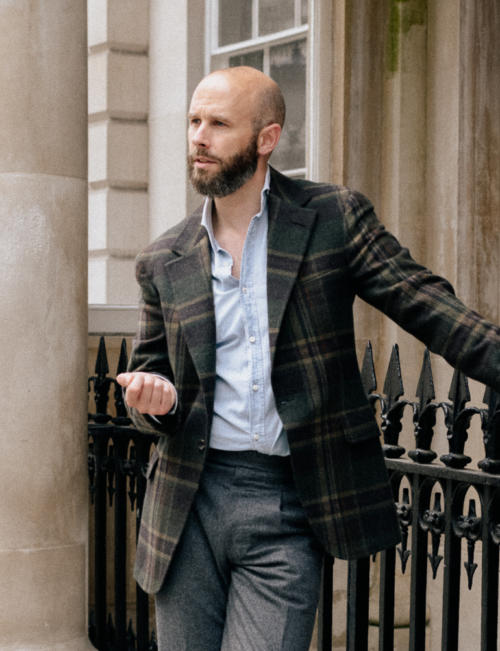
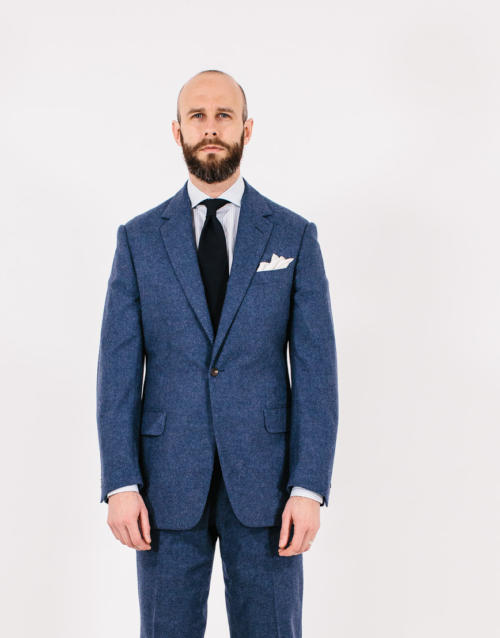
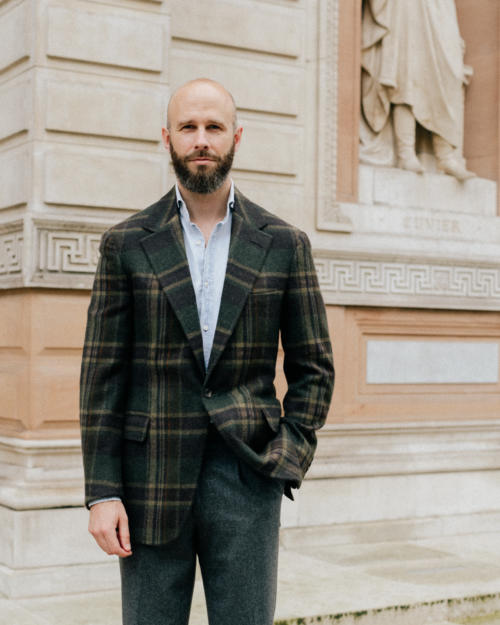
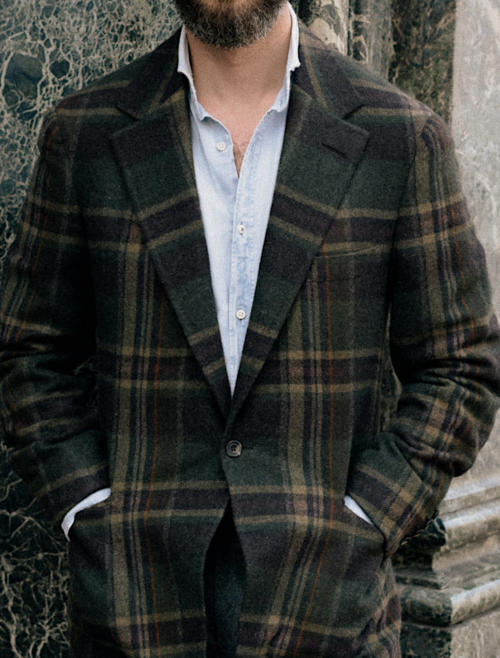
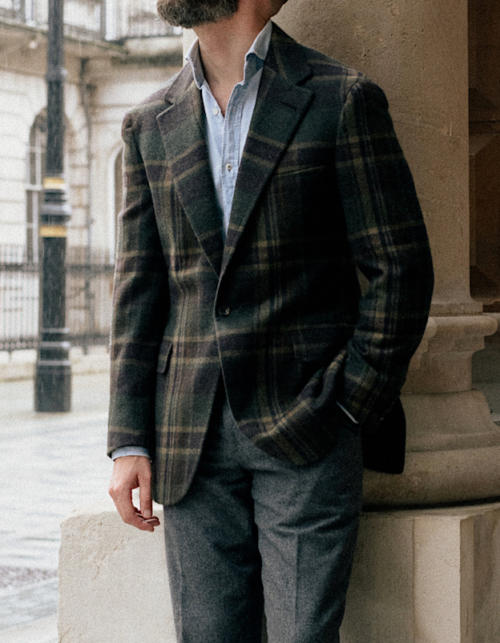
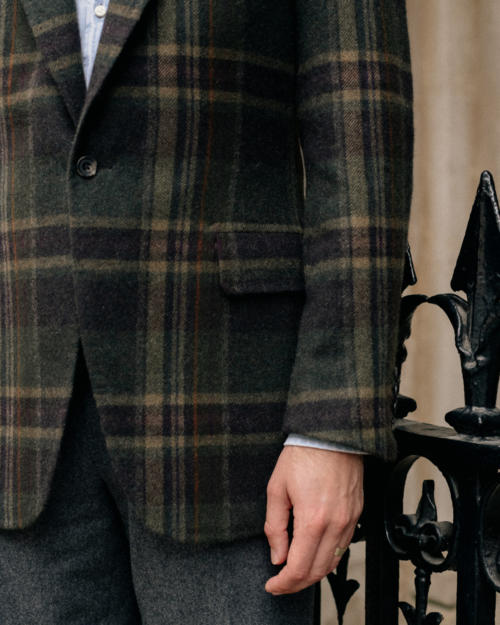
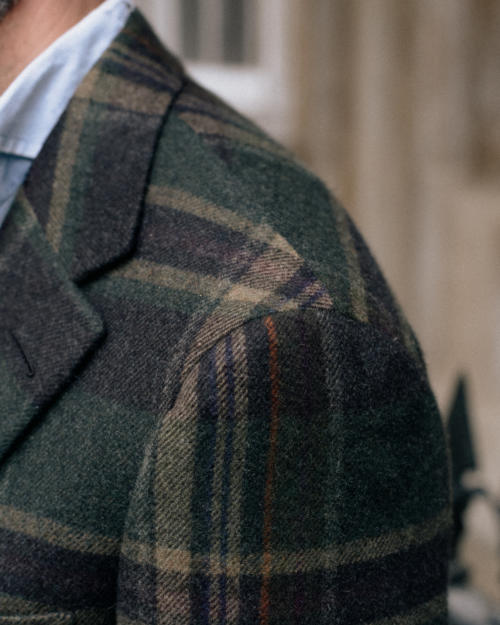
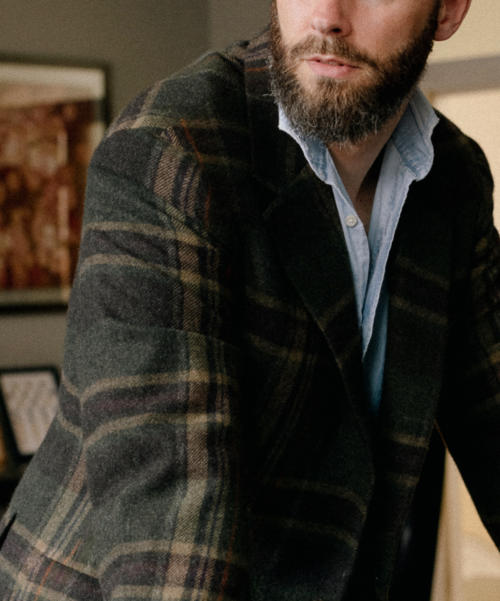


0 comments